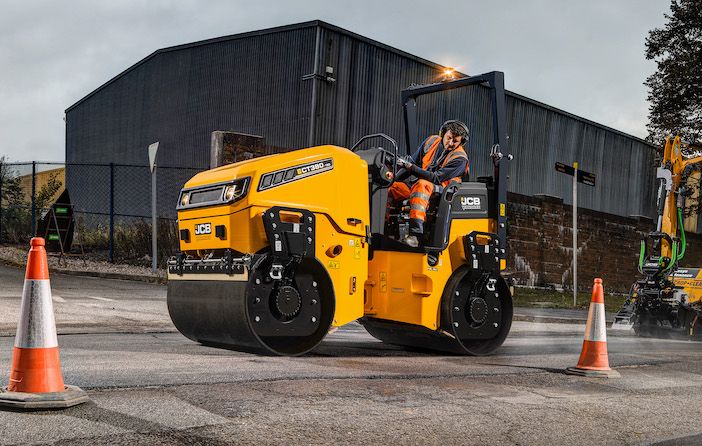Global equipment manufacturer JCB has added the CT380-130 and CT430-140 tandem vibratory rollers to its compaction range, completing a line-up of sub-5 tonne machines. Designed primarily for the rental industry, the two machines sit above the current CT160-80/100 and the CT260-100/120. The first number represents the weight category that the machine competes in, the 3.8-tonne market in the case of the CT380-130, with the second number denoting the drum width in cm.
Key features include:
- EU Stage V diesel engines with DOC and DPF
- Drum offset to each side for full access to compaction site
- Hydrostatic double drum drive delivers excellent gradeability
- V-shape chassis ensures maximum working area visibility
- Sliding comfort seating with safety switch and seat belt monitoring
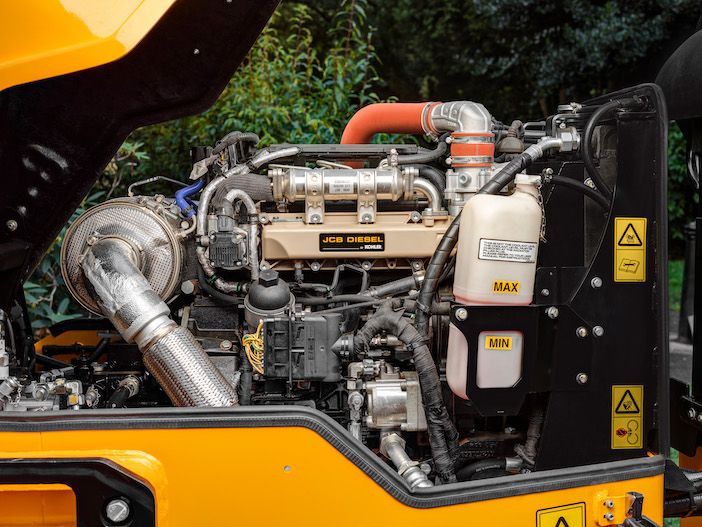
Both machines are powered by the latest EU Stage V JCB by Kohler diesel engine, providing 36.5kW (49.6hp). The Stage V engine features a diesel oxidation catalyst (DOC) and a diesel particulate filter (DPF). The engine can be easily accessed, with a tilt forward engine canopy providing ground level access to all fill and service points. An EPA Tier 4 variant without DPF will also be available.
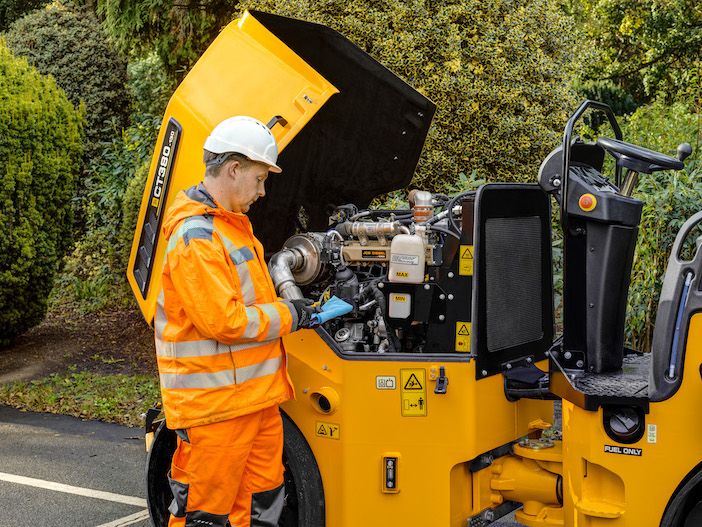
In line with the CT160 and CT260, the new models are designed for ease of use, low maintenance and to offer a simple, robust compaction solution. The CT380-130 has an operating weight of 4.1-tonnes, generating an operating linear load of 15.8kg/cm. With a centrifugal force of 41-59kN, the machine has a vibrating frequency of 50-60Hz and an amplitude of 0.50mm. The drums can be offset to either side by up to 80mm and the roller is capable of 30% gradeability with vibration operating, or 40% when not compacting.

The larger CT430-140 weighs in at 4.5-tonnes and offers a linear load of 16.4kg/cm. With the same frequency of 50-60Hz and a 0.50mm amplitude, the heavier machine delivers a centrifugal force of 44-63kN. The roller has the same drum offset capability and gradeability as its smaller stablemate. Both models have a maximum working speed of 10km/h.
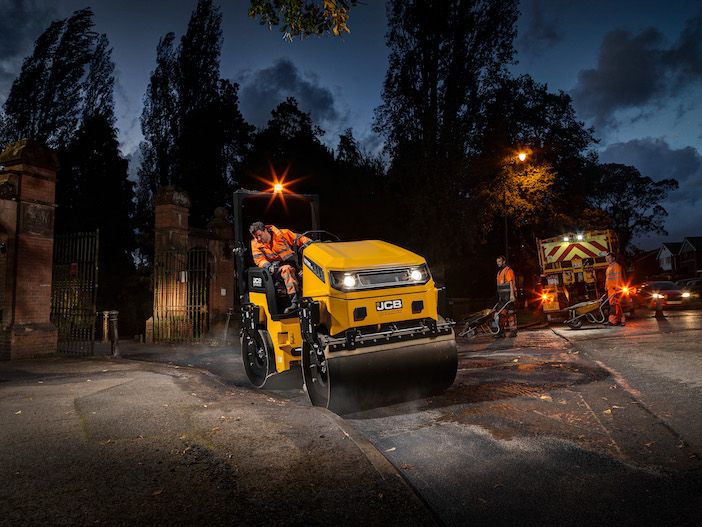
The rollers have a hydrostatic double drum drive system, along with hydrostatic drive to both drum vibration systems. The machines can be used with single (front or rear) or double drum vibration, allowing the operator to provide compaction to a range of materials and surfaces. Manual offset of the drums ensures that kerbs and ironwork can be followed without risk of damage. An automatic vibration control (AVC) avoids over-compaction at layer ends.

There are steps to both sides of the machine, providing easy access to a sliding operator seat with arm rests, a safety switch in the seat and a seat belt monitoring system. A compact metal dashboard provides a clear view of operating data and machine health and there are working lights to the front and rear of the machine for maximum visibility in poor light conditions.
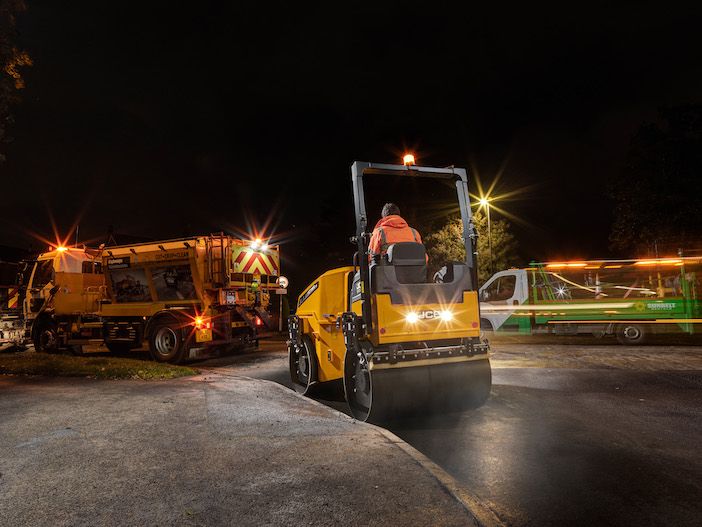
JCB’s LiveLink telematic monitoring system is standard, providing machine location and operating health information and allowing customers to effectively plan service and maintenance. Service and maintenance requirements have been kept to a minimum with a maintenance-free vibrator and articulation joint.
A PRO package is available as an option, providing spring loaded foldable drum scrapers, a double drive lever, a white noise reversing alarm, additional work lights on the ROPS frame and an asphalt temperature sensor. The machines can also be customised with the addition of left- or right-hand side edge cutting devices, a road lighting kit, an immobiliser and a green beacon.

